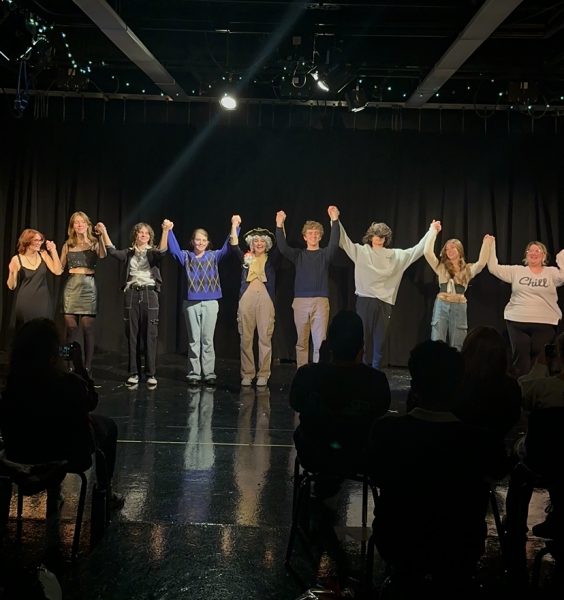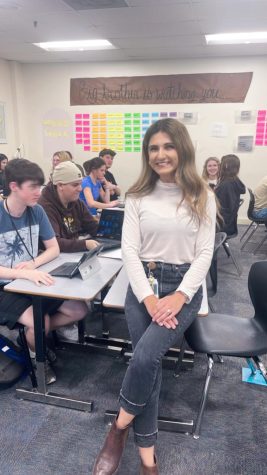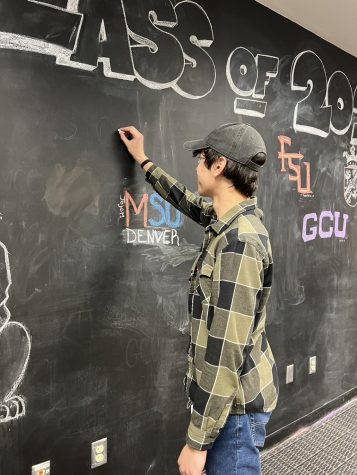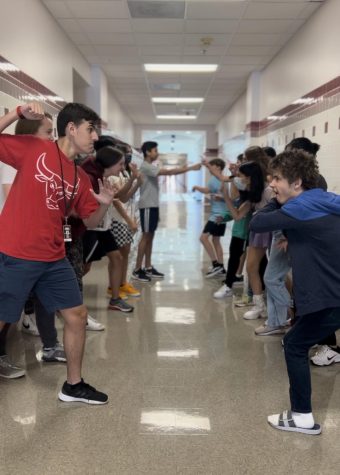One-computer schoolhouse
DM teachers, administrators reflect on EDL
October 16, 2020
Microsoft Teams for live classes. Google Classroom for assignments. Or maybe Microsoft Teams for assignments, depending on the teacher. And Synergy for checking grades.
And then there are all of the exceptions.
But even with the exceptions, which students are tasked with memorizing, DM students should be familiar with these names–because they had to use these platforms during enhanced distance learning.
Teachers, administrators, and SUSD have been pioneering these programs to increase the quality of education for students.
DM and SUSD started planning during the summer, during which they established a bell schedule, worked with technology and decided how this school year would logistically operate.
More recently, the school and district have been planning DM’s return to in-person learning.
Durings the summer, SUSD chose Microsoft Teams as the preferred platform for EDL.
“The Zoom platform was really popular in fourth quarter,” said Ms. Hardy, DM’s 10th grade assistant principal, “but we shied away from it more and more because we had hacking situations; we had advisement that it was an unsafe database.”
Ms. Hardy appreciates Teams because it “links to all of our systems that we already have in place.”
English teacher Ms. Jongewaard believes that Microsoft Teams is significantly better than Zoom, even without considering security features.
“There is a feature in Microsoft Teams called class notebook,” Ms. Jongewaard said, “and that’s been really helpful for me.” Her students are able to collaborate in the notebook, and students’ writing uploads to her computer almost immediately.
She also has the capability to divide her class into multiple smaller meetings, which she uses for IB co-class projects.
Teams, in fact, has the theoretical capability to replace Google Classroom, but most teachers are still using both platforms combined.
“Too many teachers are already trained in Google,” DM Principal Dr. Hirsch said, for Teams to replace Classroom.
But Microsoft Teams was not planned to be the only new technological platform; the district’s original intention was to heed parent feedback and use Buzz as a starting point for all courses.
“The parents wanted one platform,” Dr. Hirsch said; “they were upset that you had Canvas and Google Classroom,” along with a host of other online platforms.
There is nothing that replaces the in-class ability to move students around, or have them quickly pair up and then come back; there’s just the classroom magic that’s gone, which really is frustrating, but it’s something we’re working around.
— Mrs. Varosky
Buzz would have been a launchpad for all school-related activities. However, Buzz presented many technical difficulties that limited its use.
And Buzz was not the only source of technical difficulties.
SUSD, in the hopes of decreasing these difficulties, implemented some teacher training for platforms including Microsoft Teams and Buzz, but many teachers continued to have issues with technology.
Mr. Rouhani, a DM math teacher, says that teachers still had technological problems partly because the technology training could have been more robust.
In fact, Mr. Rouhani has firsthand knowledge about many technological issues because he decided to help some of his fellow colleagues who had issues with technology.
Mr. Rouhani noted that many teachers use workaround strategies when trying to troubleshoot with technology, rather than using a more straightforward solution, which he said is an issue that the training should have better addressed.
“Every time I talk with them,” he said, describing the teachers who he has helped, “they remark that the solutions I suggest seem so easy.”
His observations, when paired with his own experiences with technology, shaped his perspective on technology’s role in EDL.
“My opinion is that we should have just picked one [platform],” Mr. Rouhani said; “we should have said, ‘alright, we are all going to do Teams and that’s it.’”
Mr. Rouhani acknowledged that having every teacher at DM use Teams for both live classes and assignments would require a sharp and difficult transition; however, he also remarked that if he were a student, he would have needed “a page in [his] planner” just for keeping track of each teacher’s preferred online platforms.
Technology was a major component in planning for EDL, but scheduling was also an issue.
“The district did not want you to be on your computer for six straight hours, learning from a teacher,” said Dr. Hirsch.
“That’s what Paradise Valley has done, and some other places. The parents in Scottsdale said, ‘That’s not good for you.’”
Accordingly, DM decided to employ a daily schedule featuring both synchronous and asynchronous learning time, during which students only have three synchronous classes per day.
In fact, DM is continuing with the concept of having only three periods a day, even after the end of EDL.
Not many doubt that the past half year has brought difficulties to schools around the nation and has forced many teachers to significantly alter their curricula. And now, many DM teachers are yet again changing their curricula, this time in order to accommodate modified in-person learning.
DM English teacher Mrs. Varosky did not focus on group presentations during EDL because she “just didn’t feel like it was servicing students to do that online.” After fall break, however, she is moving toward projects and away from lectures.
Mrs. Varosky also noticed that she saw very little student participation during EDL. She hopes to focus more on participation during in-person learning.
But at least Mrs. Varosky, other teachers and DM as a whole have successfully completed a second quarter of online learning.
“There is nothing that replaces the in-class ability to move students around, or have them quickly pair up and then come back,” Mrs. Varosky said during the midst of EDL; “there’s just the classroom magic that’s gone, which really is frustrating, but it’s something we’re working around.”











Mrs. Varosky • Nov 4, 2020 at 10:31 am
Well-rounded writing & a great look at current events! 🙂